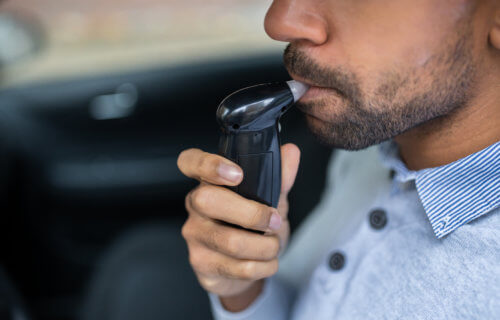TSUKUBA, Japan — For over 11 years, commercial drivers in Japan (taxi, bus, and truck drivers) have had to take a mandatory alcohol breath test at the start and end of each driving shift. The policy is intended to stop drunk driving, but is it effective? According to a new study from the University of Tsukuba the general idea behind the rule is valid, but the policy hasn’t been executed properly.
Researchers report that without proper implementation, mandatory breath testing efforts may make little difference to the number of alcohol-related collisions.
“Our findings suggest that the breath testing policy has not been effective. This is probably because of how it is implemented—the drivers are only tested at the beginning and end of their shift and can simply phone in to report themselves sober if they begin or end their shift away from head office,” says lead study author Professor Masao Ichikawa in a statement.
The early 2000s saw a number of high-profile, tragic car accidents in Japan caused by drunk driving. In response, the Japanese government put in place harsher penalties for drunk driving and lowered the legal blood alcohol level. Additionally, in May 2011 all commercial drivers began mandatory breath tests before and after each shift. Fast forward to today, and there’s been recent chatter about extending this requirement to even include certain categories of non-commercial drivers.
“Now that mandatory testing for non-commercial drivers is being considered, it is important to understand how effective this policy has been for dealing with the issue of drunk driving among commercial drivers,” Ichikawa explains. “We wanted to see what difference this policy has made in the number of drunk driving-related crashes involving commercial vehicles.”
Study authors analyzed annual crash data in an effort to better understand the trends related to alcohol-linked car crashes. Since breath testing had been mandatory for commercial drivers — but not non-commercial drivers — since 2011, researchers were able to compare trends between those two groups to get a sense of the effectiveness of the commercial driving breath test mandate. ”
The results were somewhat surprising,” Ichikawa adds. “We found that the alcohol-related collision rates for commercial and non-commercial drivers were actually very similar for the period from 2011 to 2020.”
Surprisingly, crash trends among both Japanese commercial and non-commercial drivers have actually been quite similar over the past two decades. Crashes declined across the board starting around 2001, which makes sense considering that’s when harsher driving laws took effect, until 2012. Then, from 2012 to 2020, both groups experienced neither an increase nor a decrease in the amount of alcohol-related crashes.
In summation, study authors conclude there is a pressing need for a more efficient way to stop drunk driving. One promising alternative is ignition interlock devices, or technology that tests the driver’s breath before they have a chance to start the vehicle. If alcohol is detected, the car won’t start.
The study is published in the Journal of Epidemiology.

